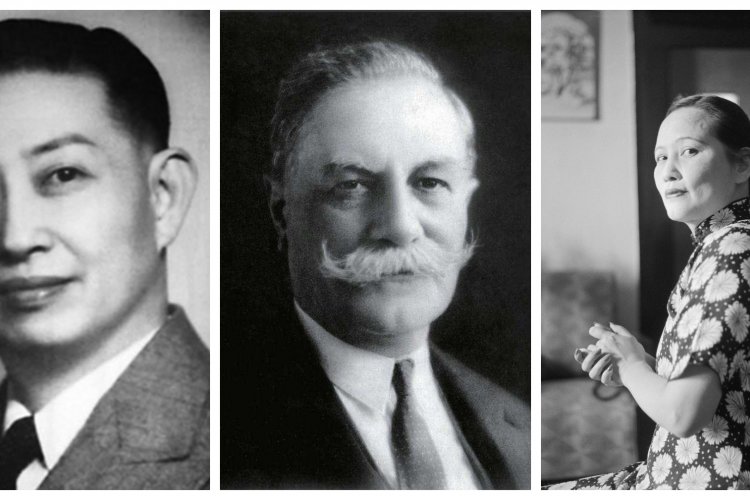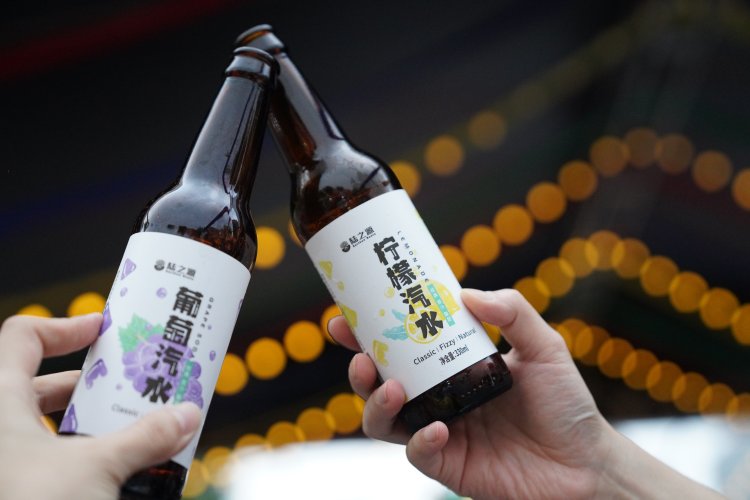Ich Bin Ein Beijinger: The Evolution of a Chinese Foodie
“Ich Bin Ein Beijinger” was a magazine column written by Kaiser Kuo that ran in every issue from October 2001 to October 2011. Kaiser offered one self-proclaimed Beijinger's take on the city that he's come to call home.
August 2004 – Unless they’ve come to Beijing from the vicinity of an established Chinatown, foreigners arriving in Beijing quickly discover that food here bears little resemblance to what passes for Chinese cuisine back home.
Most find it incomparably better here: The ingredients tend to be fresher, the preparation more skillful and, most importantly, the dishes aren’t dumbed down for what most Chinese restaurateurs in Diaspora believe – erroneously, I submit – to be a stunted foreign palate. Sure, there are those few who come to China and find themselves missing the chicken lo-mein at the Panda Express back in Tulsa, and as someone who must confess dismay at my first pizza in Rome and outright disgust at my first gyro in Athens, I guess I’m in no position to condemn them. Still, most waiguoren who come here appreciate the authenticity – not to mention the sheer variety and the terrific price – of the eats.
No one becomes an expert on Chinese cuisine overnight, and not even the most sophisticated of Chinese food lovers was born with a craving for stinky tofu and preserved duck’s blood. Rather, we progress through stages, of which I identify four.
Stage 1: Timid
The first cautious, exploratory steps into the vastness of Chinese food culture are pretty much the same for everyone. There’s no shame in it: Pay no heed to the snobs. Most people wonder at first why broccoli beef and lemon chicken aren’t on the menu and why there isn’t a soy sauce bottle with a red cap on the table.
But once beyond that, they quickly learn to order from among the dozen or so safe and tasty dishes that have been canonized as a genre of their own: laowai cai. You’ve got your gongbao jiding (aka Kung Pao chicken), your jidan chao xihongshi (scrambled eggs stir-fried with tomatoes), your braised eggplant (shao qiezi) and your sweet-and-sour pork (gulao rou). Adventurous dining, at this stage, might include a mapo doufu. For a really cheap meal there’s always a heaping plate of jiaozi at the local dumpling place; up-market treats for the newbie include Peking duck, of course, or dim sum at a reputable place, with a polite pass on the chicken feet.
When they find themselves rattling off canonical laowai cai dishes to the waitress without so much as cracking the menu, and they’re sick to death of hot and sour soup, it’s time to move on.
Stage 2: Curious
Stage 2 foodies abjure generic jiachang cai – home-style cooking – in favor of regional cuisines from Hakka to Hunan, Chongqing to Chaozhou. By Stage 2, they’ve learned some tricks – like the look-around-at-other-people’s-tables-and-point trick, or the randomly-point-at-any-dish-without-the-character-for-dog trick. They’ve figured out that the Sichuanese dish koushui ji – literally “saliva chicken” – does not, in fact, contain saliva. Thousand-year-old eggs, tripe, sea cucumbers and pig knuckles no longer gross them out.
When they realize that they’ve actually developed a fondness for Chinese desserts, it’s a good indication they’ve crossed the line into ...
Stage 3: Strident
Stage 3 types can be some of the more annoying people in town, like jazz purists who won’t shut up about Coltrane and Miles Davis. Dining with a Stage 3 you’re apt to learn much that is useful, but also likely to experience intestinal discomfort. Like the Stage 2 types, Stage 3 foodies prefer regional cuisines, but revel in regional obscurity: they’ll go into rapturous conniptions, for example, over a rare fungus or herb from some glacial valley in Yunnan that tastes, to the rest of us, rather like mud. Naturally, they turn up their noses at laowai cai: They’ll eat jiaozi, yes, but only shirtless, on the street, and with a fistful of raw garlic and warm Yanjing to wash it all down.
They insist on eating in dives, as though hygiene were somehow antithetical to authenticity, and they contribute their fair share to the mounds of detritus on the floor: Crayfish exoskeletons (removed intact from mouth after 20 seconds of precision tongue-and-tooth work), snail shells and fish bones. They’ll also insist on ordering baijiu with a meal, making no exception for lunch and protesting loudly that they actually like the taste of the stuff. Late in the stage, they’ll order baijiu from the scary jar in which various reptiles are steeped.
They also delight in showing off their capacity for capsicum, commanding waitresses in Sichuan restaurants – in dialect, no less – to leave the heaps of chilies and peppercorns stewing in the oil of their shuizhuyu for maximum burn, and complaining bitterly – expletives also in dialect – should the chili-to-chicken ratio of their laziji weigh in at less than ten-to-one.
When they’ve seared off the better part of their stomach lining and are eager to move on to less brutal but even more rarefied foods, they’re ready to go on to the final stage.
Stage 4: Cantonese
Cantonese food is widely regarded as the pinnacle of Chinese cuisine – meticulously prepared and beautifully presented, its dishes playing as lightly upon the palate as the meats of which they’re made weigh heavily on the conscience. The rare foreigner who embraces Cantonese culinary culture in all its bizarre manifestations has attained a kind of gastronomic transcendence: Unfettered by earth-bound mores regarding such frivolities as protection of endangered species and attachment to household pets, they bestride the country like Nietzschean übergourmet, eating what they will.
Joking aside, the Stage 4 foodie knows how to enjoy a meal, ordering, eating and sharing insights about food all without ostentation. And any Stage 4 worth his salt has picked up a thing or two about cooking, and dining at the home of one, as I recently had occasion to do, is a sublime pleasure. She made all my favorites, too: Kung Pao chicken, scrambled eggs and tomatoes, mapo doufu, braised eggplant ...
Related stories :
Comments
New comments are displayed first.Comments
![]() cowboy123
Submitted by Guest on Fri, 10/28/2011 - 18:14 Permalink
cowboy123
Submitted by Guest on Fri, 10/28/2011 - 18:14 Permalink
Re: Ich Bin Ein Beijinger: The Evolution of a Chinese Foodie
Cantonese food is not that exotic or inaccessible to foreigners. The American-style Chinese food is a variation of Cantonese.
Personally, I think most foreigners don't ever really get past Stage 1 though..
![]() xueer
Submitted by Guest on Fri, 10/28/2011 - 15:32 Permalink
xueer
Submitted by Guest on Fri, 10/28/2011 - 15:32 Permalink
Re: Ich Bin Ein Beijinger: The Evolution of a Chinese Foodie
As an Eurasian girl growing up in HK I actually started with step 4 first, but still ended up hitting steps 1, 2 and 3 in that order upon my arrival in Beijing.
Scarily accurate account of a 'laowai's' food evolution!
![]() gizzle82
Submitted by Guest on Fri, 10/28/2011 - 11:45 Permalink
gizzle82
Submitted by Guest on Fri, 10/28/2011 - 11:45 Permalink
Re: Ich Bin Ein Beijinger: The Evolution of a Chinese Foodie
you can't beat 家常菜, no how no way.
Another phase people seem to go through involves western/home cuisine. I managed not to eat any at all for almost the whole first year, thinking "that's for wimps who shouldn't really be in China", but have since fallen off the wagon.
Just can't eat Chinese every day, especially when there's places like Element Fresh around, if that makes me a wimp then fine!
Validate your mobile phone number to post comments.






